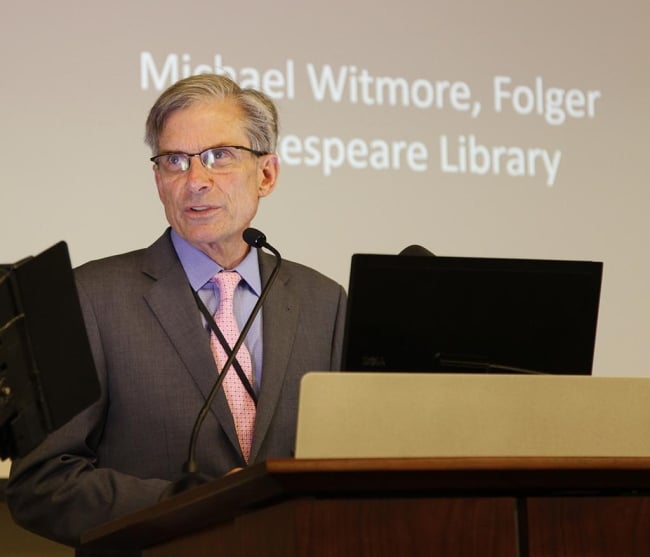You have /5 articles left.
Sign up for a free account or log in.

National Endowment for the Humanities
WASHINGTON -- The National Endowment for the Humanities has a new home and a new chairman, but the agency’s work to fund digital humanities projects continues unabated.
The NEH Digital Humanities Project Directors Meeting was hosted for the eighth time in Washington on Monday, but for the first time in the agency’s new premises in the recently renovated Constitution Center. The event brings together grant recipients of the Office of Digital Humanities, the grant-making arm of the agency.
Monday also marked the first time William D. (Bro) Adams, who was sworn in as the 10th chairman of the NEH less than two months ago, introduced the event. Adams previously served as president of Colby College, a liberal arts college in Maine, and was in April nominated by President Obama to succeed Jim Leach, who stepped down in May.
Adams noted that -- even during his brief time as chairman -- established museums and institutions around the country have become increasingly more dependent on and fluent in technology to display and distribute their work.
“If you flip that arrow -- if you change the directionality of that relationship -- we also are very excited about the opportunities we have to ask questions about the way the mediation of the humanities and of human life by the digital world is creating a whole set of new questions, new challenges, for organizations, for institutions, for the way we live and work as individuals that we have just started to scratch the surface of,” Adams said in his opening remarks. “That will be a big part of our work at the NEH as we go down the road, and undoubtedly yours as well.”
The 33 projects on display Monday -- most of which were awarded grants to support them in their startup and implementation phases -- received more than $4.1 million. Grant recipients had three slides and three minutes to give the “proverbial elevator pitch” about their projects, as Brett Bobley, director of the Office of Digital Humanities, put it.
“I’ll tell you, there is no crueler joy than asking humanities scholars to limit themselves to three minutes,” said Jason Rhody, a senior program officer in the Office of Digital Humanities.
Armed with a triangle, Rhody attempted to keep the grant recipients from speaking for more than three minutes during two lightning rounds. The triangle quickly proved useful. Only five of the 33 presenters kept their talks to their allotted time.
As in previous years, history projects dominated the lineup: Felecia Lucht, an assistant professor of Wayne State University, presented plans to create a multimedia platform for students to explore ethnic groups in Detroit; Abby Mullen, a graduate student at Northeastern University, discussed plans for a two-day workshop for military historians; and Ann Elizabeth Armstrong, an associate professor at Miami University in Ohio, unveiled a location-based game to make students relive Freedom Summer, the 1964 campaign to register African-American voters in Mississippi.
Among the databases and software tools, some projects stood out. For example, Harry Mairson, a professor of computer science at Brandeis University who introduced himself as an “amateur luthier,” drew enthusiastic responses to his idea to create a programming language for string instrument design.
The meeting ended with an important lesson for the 20 startup grant recipients who may consider applying for implementation grants in the future: a discussion about the challenges associated with scaling up digital humanities projects.
Speaking about the scholarly network MediaCommons, Kathleen Fitzpatrick, the Modern Language Association’s director of scholarly communication, reminded the audience about the work that goes into maintaining and growing a project over a longer period of time.
“That kind of commitment -- time, energy and labor -- is very, very hard to scale,” Fitzpatrick said. “We’re now at a point at which we’re recognizing that real scalability may not just require us to think about continued growth and its effects, but also about the limits of growth and, in fact, at moments strategic contraction.”
The best way for time-strapped scholars to be able to invest as much time into their projects as their courseloads and other obligations permit, Fitzpatrick said, may be to recruit colleagues who are also passionate about those projects.
Lisa Snyder, a researcher at the University of California at Los Angeles, recommended that scholars break their long-term aspirations into smaller, more achievable goals, and stressed organizational and communication skills.
“Long-term is kind of a challenge,” Snyder said. “Suddenly you’re in a project where the light at the end of the tunnel is not the end of the fall quarter -- it’s 10 years away.”




